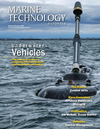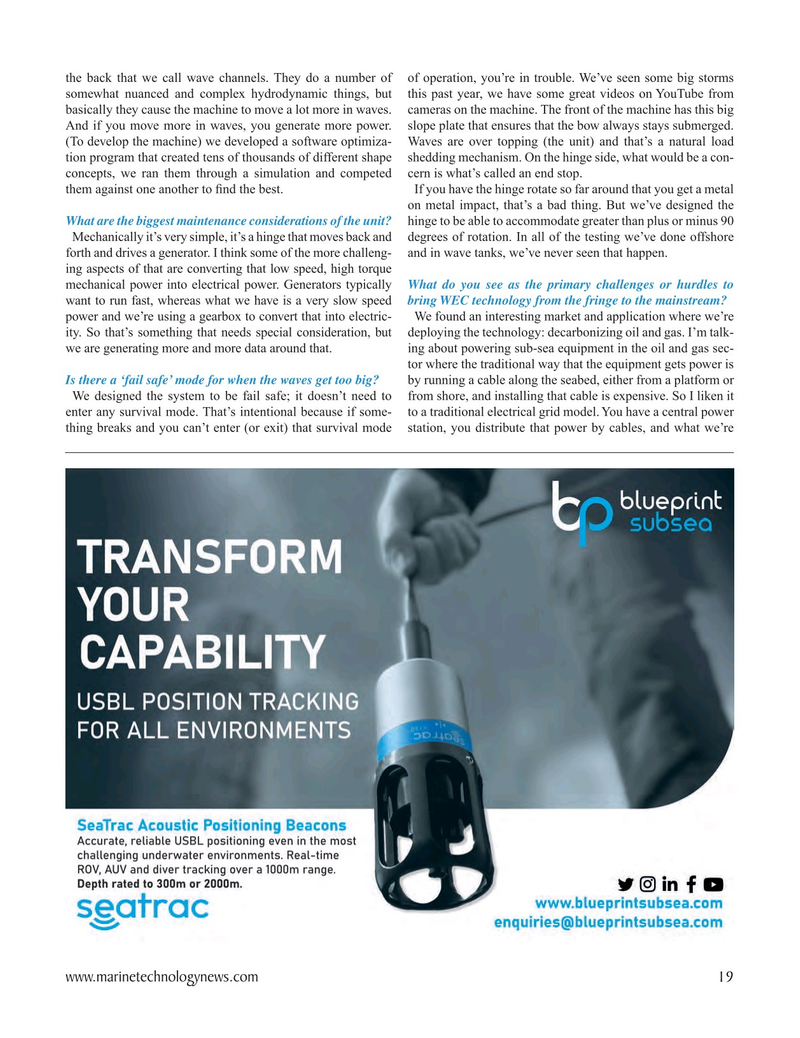
Page 19: of Marine Technology Magazine (January 2024)
Read this page in Pdf, Flash or Html5 edition of January 2024 Marine Technology Magazine
the back that we call wave channels. They do a number of of operation, you’re in trouble. We’ve seen some big storms somewhat nuanced and complex hydrodynamic things, but this past year, we have some great videos on YouTube from basically they cause the machine to move a lot more in waves. cameras on the machine. The front of the machine has this big
And if you move more in waves, you generate more power. slope plate that ensures that the bow always stays submerged. (To develop the machine) we developed a software optimiza- Waves are over topping (the unit) and that’s a natural load tion program that created tens of thousands of different shape shedding mechanism. On the hinge side, what would be a con- concepts, we ran them through a simulation and competed cern is what’s called an end stop.
them against one another to ? nd the best. If you have the hinge rotate so far around that you get a metal on metal impact, that’s a bad thing. But we’ve designed the
What are the biggest maintenance considerations of the unit? hinge to be able to accommodate greater than plus or minus 90
Mechanically it’s very simple, it’s a hinge that moves back and degrees of rotation. In all of the testing we’ve done offshore forth and drives a generator. I think some of the more challeng- and in wave tanks, we’ve never seen that happen. ing aspects of that are converting that low speed, high torque mechanical power into electrical power. Generators typically What do you see as the primary challenges or hurdles to want to run fast, whereas what we have is a very slow speed bring WEC technology from the fringe to the mainstream?
power and we’re using a gearbox to convert that into electric- We found an interesting market and application where we’re ity. So that’s something that needs special consideration, but deploying the technology: decarbonizing oil and gas. I’m talk- we are generating more and more data around that. ing about powering sub-sea equipment in the oil and gas sec- tor where the traditional way that the equipment gets power is
Is there a ‘fail safe’ mode for when the waves get too big? by running a cable along the seabed, either from a platform or
We designed the system to be fail safe; it doesn’t need to from shore, and installing that cable is expensive. So I liken it enter any survival mode. That’s intentional because if some- to a traditional electrical grid model. You have a central power thing breaks and you can’t enter (or exit) that survival mode station, you distribute that power by cables, and what we’re www.marinetechnologynews.com 19
MTR #1 (18-33).indd 19 1/30/2024 6:52:36 PM

 18
18

 20
20
